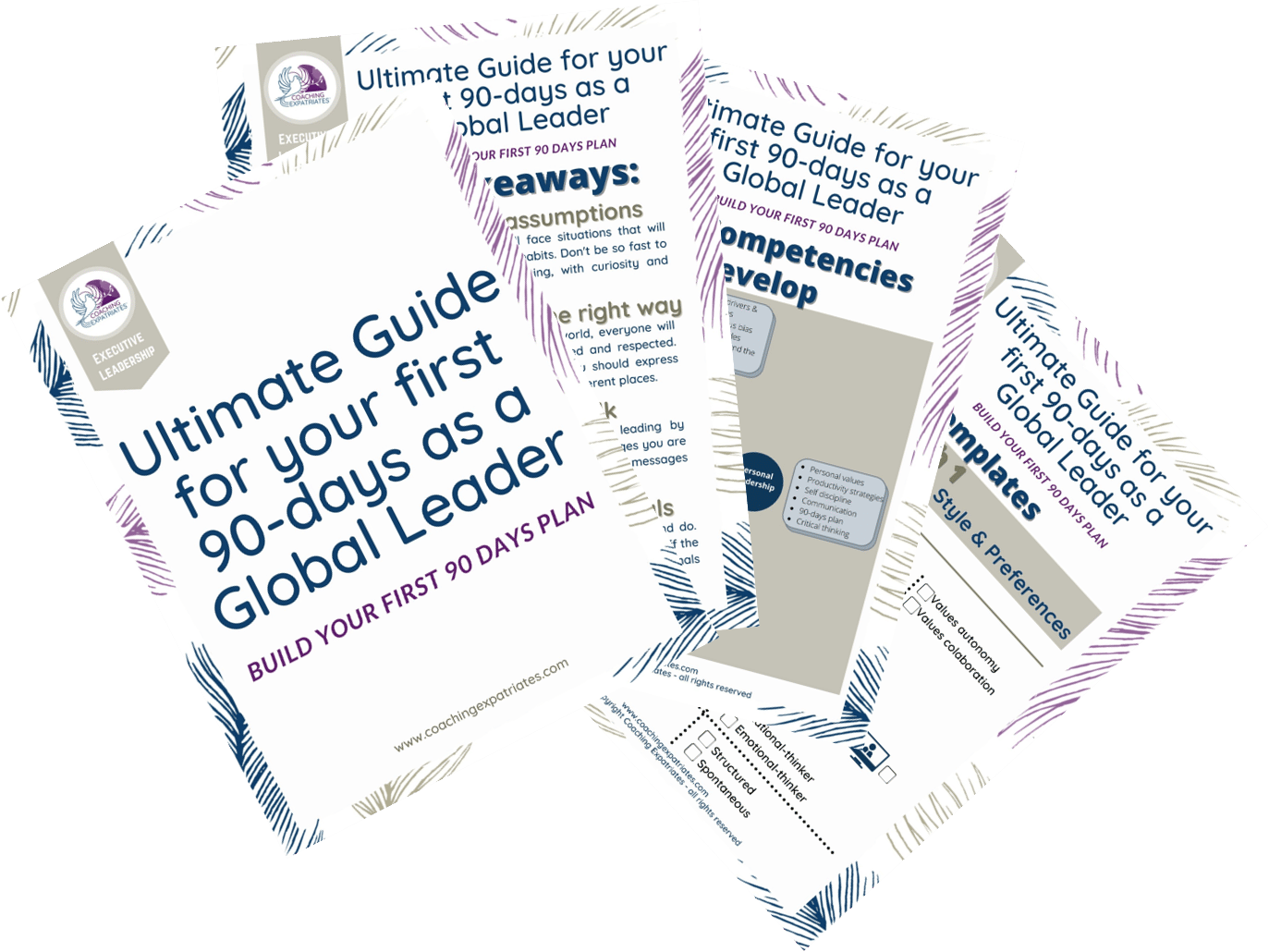Remember that movie from the 80’s “The Karate Kid?” It’s funny how life sometimes is a bit like that. You go to an expert thinking they will teach you to fight Karate, only to learn that first, you have to paint an entire wall for days. Developing leadership skills to become a unique global leaders sound a bit like that, too sometimes.
“I am painting this fence for days, Sensei Miyagi, and still you didn’t teach me any karate moves,” said Daniel at some point in that movie – or something along those lines.
Sometimes, though, the strangest things are the simplest solutions for consistent and reliable growth. Leaders seeking to improve their leadership skills may find it weird when I suggest “journaling” as means to improvement – much like Daniel not seeing the purpose of painting the wall. By the way, painting the wall had its purpose: to develop his muscle memory, which we learn when Daniel’s sensei punch him out of the blue, and he defends it, without even thinking about it.
It’s a funny thing: whenever you think about journaling, what comes to your mind?
90% of people tell me they picture a girl, in the corner of a room, with a journal on her lap, thinking about what to write down related to her love life or secret affairs. Yes, people relate to a secret diary.
In leadership, though, “journaling” is far from secret (although it can get pretty personal); but it is indeed like a diary. However, I prefer the word “note-taking” instead. Let’s go with that for now. Today, let me share with you a way to use note-taking as your best ally to improve your performance and skillset as a global leader.
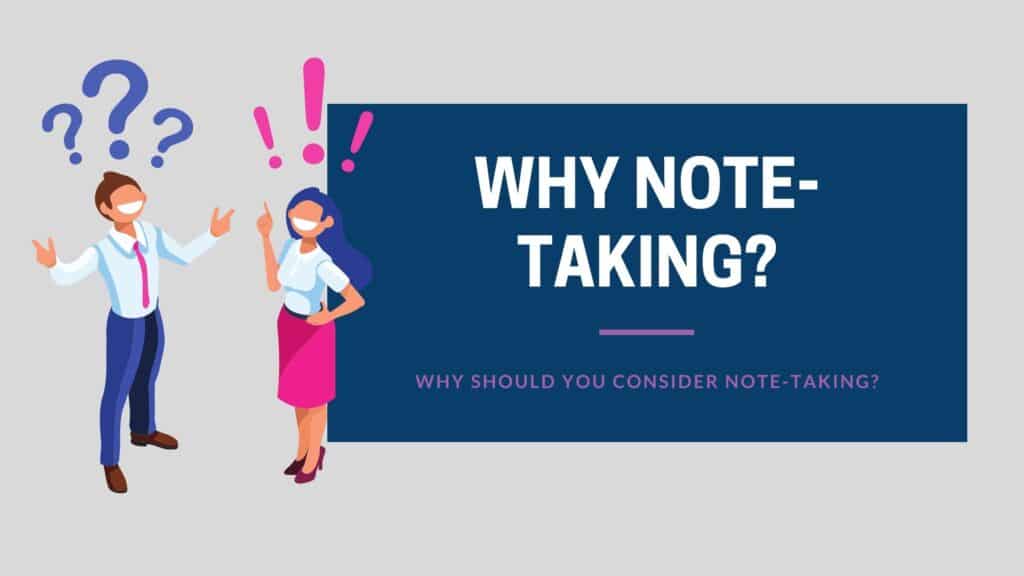
Why Should You Consider Note-Taking?
I remember my first note-taking classes. My mom wanted to take that class herself, and she thought it would be a great skill for me as well. That it was, not that I could realize it at the time. Back 30 years ago, you relied on note-taking for almost everything, especially if you lived in underdeveloped countries, like I did, where mobile mini-cassette recorders were impossibly expensive. So if you wanted to keep record, you should note-take.
There is something about note-taking that makes facts be wired in our memories differently. We may forget about the fact and what was said, but once we reread our notes (when they are well taken), we immediately recover 99% of the entire context. It’s pretty impressive. Well, I am making up the numbers, but not the order of magnitude.
The reason for this impressive memory recovery may be rooted in the fact that the person taking notes must acquire and filter the incoming information, organize and restructure existing knowledge vis à vis the new information, comprehend everything and then write down their final explanation. This cognitive process requires a lot of brainpower, which must create a stronger memory record in our brains, explicitly linked to what was written. We forget, but once reread, it comes back.
So when I say journaling in a leadership context, I don’t mean your secret diary about why you hate your boss so much. No, no. (although you could have one if that would make you feel better.)
I mean journaling the resolutions and outcomes of every event at the time they ARE happening; in other words, taking notes (no matter if on paper or digitally) about facts, decisions, and outcomes.
Recordings do not work, in my personal opinion, because there is no way (at least as of now with the current technology) to summarize just the important pieces; while during note-taking, you only make notes of the relevant things. You can translate one entire meeting of 1 hour into 5 or 6 bullet lines.
As a plus, if you intently decide to take notes, you will listen much more diligently, trust me! And good listening skills is key in global leadership!

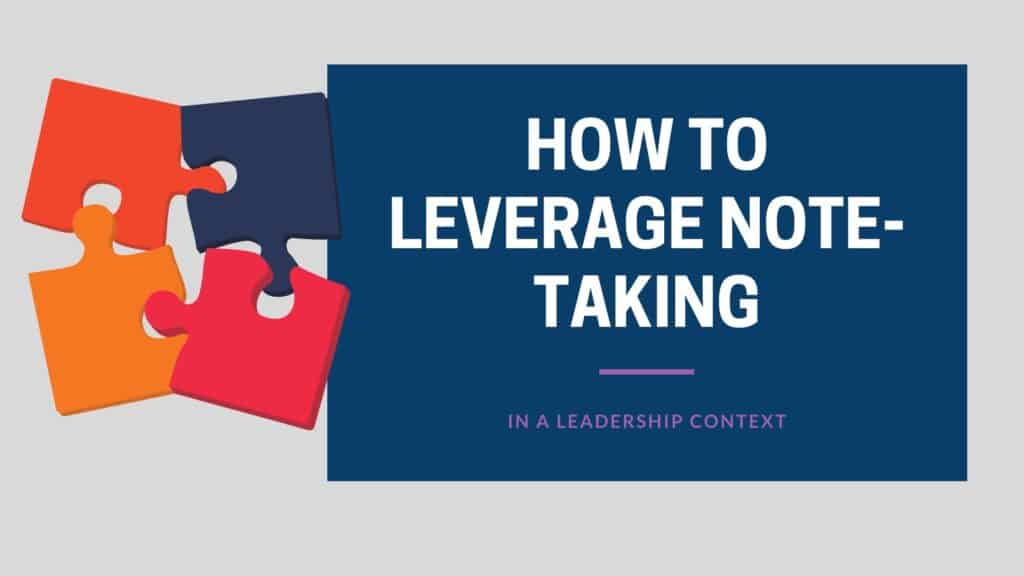
How To Leverage Note-Taking In Leadership?
So, I usually recommend global leaders to up their game in terms of note-taking and make sure they “journal” their meetings and events thoroughly.
There are three types of note-taking structures:
- Outline: you use an outline to structure and show the relationships between the pieces of information you capture:
- Visual: you can either use pictures, drawings, or flowcharts to create better visual information, especially when capturing information related to a process or structure.
- Cornell: Invented at Cornell University, Cornell notes are set up in a particular way that includes space for annotation and summary. Watch this video to learn more about it.
When journaling for leadership and work context, I recommend using a mix of the Outline and Cornell methods. Here is how to do it:
STEP #1: Have One Central Journal
Having just one source of record is important in any project if you want to be neat and organized. If you have scattered notes everywhere, you defeat the purpose of note-taking, in my opinion, because you can’t use notes that you can’t find. So, centralizing your record source is crucial to make sure it becomes a reliable (and handy!) source of data and information. Something you use in a consistent basis. If you decide to record everything in a paper notebook, make sure to hang around with it everywhere. If it’s a tablet, the same thing applies. This means it must be something easy and convenient to carry around.
STEP #2: Use a mix between Outline and Cornell methods:
A) The Structure:
- 1) Date: at the top left
- 2) Topic: at the top right
- 3) Key takeaway: could be at the left of the outline, or at the right. I personally do it at the right side of the paper. Opposite to what’s shown in my picture below.
- 4) Outline: right below the topic line; use our suggested outline below.
- 5) The 5WH Next Steps: at the bottom of your record.
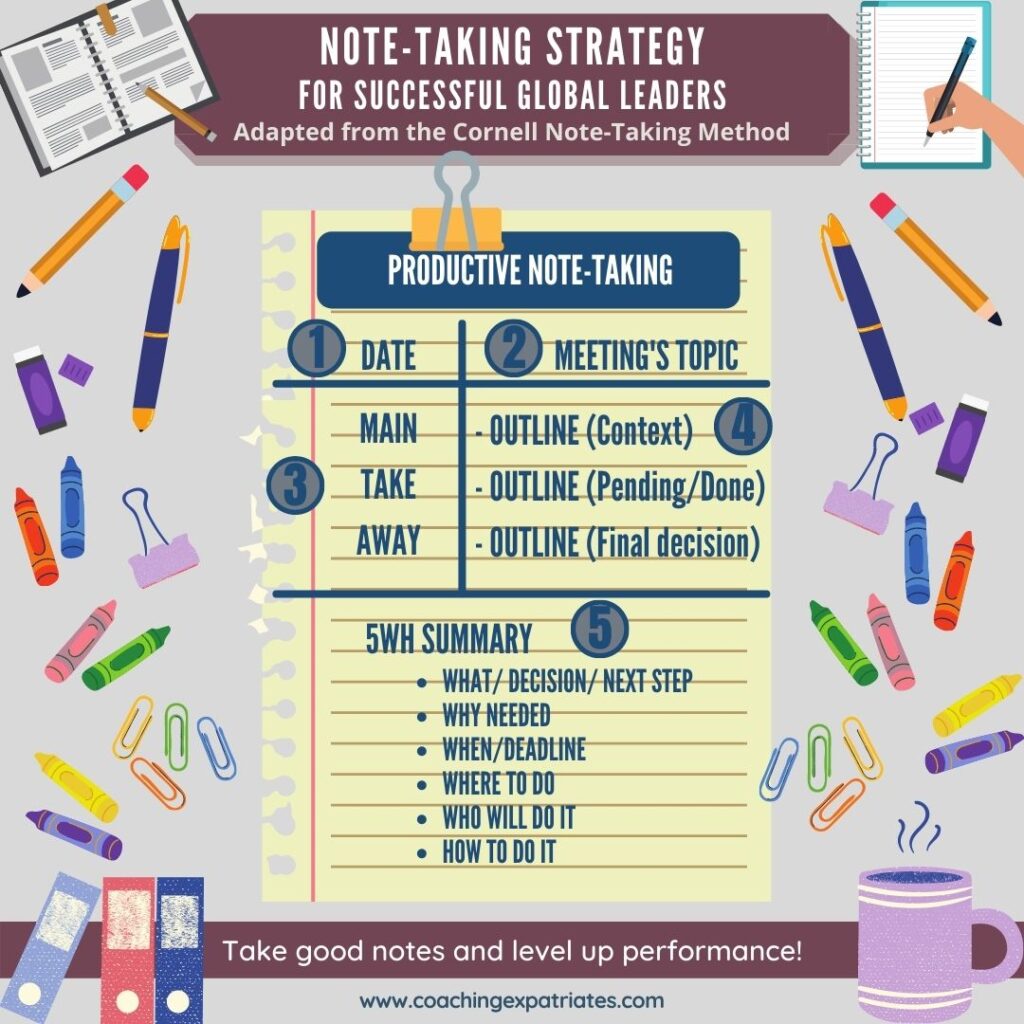
B) The Outline Details:
Outline #1: A Bullet For Your Meeting’s Context
The first bullet of your outline is to mention the context or situation that prompted the meeting or event.
This may sound obvious, but most inexperienced note-takers completely forget to put context in each of their records. Recording context means you will quickly recall what that event or meeting was all about. So let’s say you are meeting to talk about an HR vendor. Your context might be, “Ana is questioning the current health plan vendor due to poor performance, and we will meet to discuss a course of action.” If you just record actions under the title “Health Plan vendor,” you might forget what this was about later on.
Outline 2: A Bullet For Actions Taken And What Is Still Pending
Include a bullet about what has already been done. This is also part of the context, but this will give you perspective on what has already been taken care of on the matter. This will help you, in the future, evaluate which stage of that activity you guys were in when you were discussing it. “Provider assessment made and scores were poor. Talked already with Head of HR, and he requested new vendor options.”
Don’t forget to include what’s pending. For example, in this case, you could say “options procurement pending.”
Outline 3: A Bullet For The Decision Made During The Meeting
During your meeting, you will talk about many things. You will agree, you will disagree, maybe even brainstorm for new ideas. Whatever happens during the meeting, if you are a good meeting facilitator, you’ll end it with some next steps, which you will record on this bullet point.
C) Summary:
Summary: A Bullet For 5WH Related To The Decision
Besides the decision(s) per se, which is the “what” in the 5HW, you will record the other elements of the 5WH for each of the decisions you and your team made during the meeting or event:
- Who will take action, or who is responsible for what
- by when should this be done (i.e. deadline)
- why this was decided
- where (if applicable) this should be done
- how this should be done
Follow up: A Bullet For Follow-up Agreement and/or Success Metric
In line with the “when” from the previous topic, it’s a good idea to record what was decided in terms of follow-ups: Will you meet again? Will you talk over the phone? Will everyone send an email with updates? So the bottom line is, what’s decided in terms of follow-up?
Besides that, an excellent idea is to talk about metrics. Does this decision has a success metric? For example, in this case, it could be having 3 different new vendor options by the deadline. Whatever it is, it is a piece of additional information that helps manage expectations.
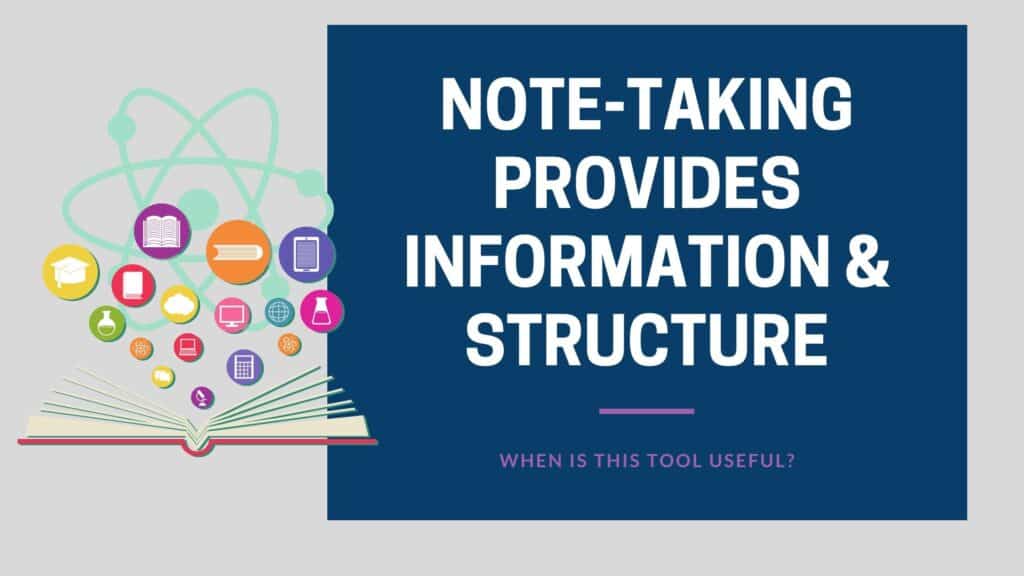
Note-Taking Provides Information And Structure
This note-taking structure is so well laid out that it will even guide your thinking process during the meetings. If you see you have only 10 minutes left, you have to quickly jump to “next steps” as soon as possible; otherwise, your meeting will not have proper closure.
This way, leaders will have a “journal” where they can refer back to when they want to remember decisions and key points. And they will also become more productive because every meeting or event will have a proper expected outcome.
How awful are those meetings that seem pointless and meaningless because they become endless discussions that lead nowhere? The reason for that is simple: they don’t have proper closure.
Note-Taking is a habit. You won’t do it well at first, most probably. You’ll have to develop this habit and create your own style and possibly even your own outline. The first thing, though, is starting with this new habit and persisting in it until it becomes second nature to you.
In my experience, if you persist in using this tool (using ONE central note-taking place and at least this outline above), you’ll skyrocket your performance, especially if you go into many meetings as part of your work life. You will soon become a walking wiki for meetings and events, so long you have your notebook with you.
You will notice that this tool becomes especially useful for recurring meetings and longer projects involving many people. It can help you keep track of progress and appraise every one of the updates easily.
Information is power. And one way to leverage information is by taking notes and storing all the information in a reliable way. You just learnt one possible way how to do that. Now, it’s up to you to put into practice.
Did you enjoy this post? If so, consider subscribing to our newsletter. We email only once per week, with relevant content geared towards global leaders who want to make impactful decisions and cultivate successful habits for higher performance. We know your inbox is sacred. We won’t sell your information or send you non-sense stuff.


